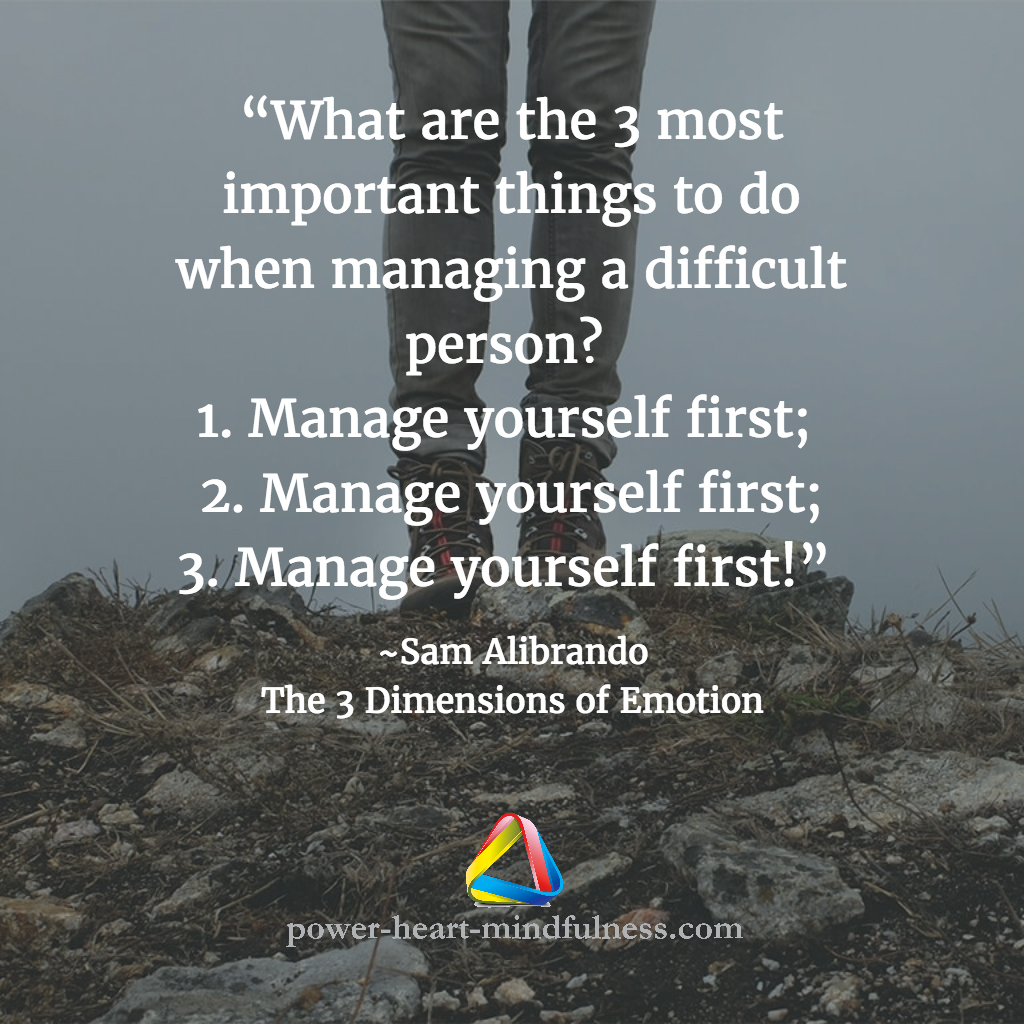There are three general ways that we emotionally react to stress, threats and anxiety: Fight, Flight and/or Freeze & Appease. (Yes, you learned this in biology class.) In my book I refer to the three movements or dimensions using the three primary colors: Fight is Red; Flight is Yellow; and, Freeze & Appease is Blue. So when you find out at a holiday meal that your niece went to a protest against Donald Trump you might react from the Red paint bucket by angrily railing at her, and every other liberal, for being sore losers. Or if your sister’s husband lists all the ways that Trump will in “make America great again,” you might react out of the Blue paint bucket by coming around to “see his point of view”—even though you voted for Hilary because you saw Trump as dangerous. Alternatively, you might go absolutely silent and emotionally detach (Yellow paint bucket) when your Uncle Bud goes on about Obama being a Muslim. We can blend the colors as well. For example, you can go into the Purple space (reactive Red and Blue) and dominate a conversation at the dinner table, not letting anyone else have a say.
All of us react in one (or a blend) of these three ways throughout the year in our public and private relationships, whether toward a spouse, a child, a boss, an employee, the idiot who just cut you off, or the president of the United States. And when we do, our limbic system (emotional brain) gets triggered and we get thrown out of balance—to the detriment of others and ourselves. But we can almost always count on our vulnerability to reactivity when co-mingling with relatives at Holiday event, when we come together with those whose ties with us are not necessarily of our own choosing.
So what can we do to mitigate our reactivity?
Well just knowing that we are reacting can curtail the extent to which we do so. This is called being mindful, and it is a positive Yellow attribute. In fact the goal is to incorporate all the positive attributes of each dimension at the same time. So you’ll want to:
- Be mindfully aware of how you are tempted to react and employ self-control (Positive Yellow); while at the same time being able to . . .
- Respect and care for Uncle Bud anyway and mindfully employ what researchers call “implementation intentions”—planning ahead not to hurt him should he behave as you might expect (Positive Blue); while at the same time . . .
- Be sure not to lose your own perspective and values and, when necessary, argue your point of view (Positive Red) without apology.
The trick and challenge is to integrate and balance the positive of all three dimensions at the same time; this is emotional intelligence and it almost always yields optimal results.
So from what color(s) are you most likely to react this holiday season? Once you can predict this, you can do what I call “Work the Triangle” by incorporating the color that is missing. So, for instance, if you tend to be a Green (Blue and Yellow) reactor, try a little positive Red to bring about balance, yielding a happier holiday season for all.
You can find out more about your relational reactivity style by taking the free Interpersonal ∆ Inventory.
